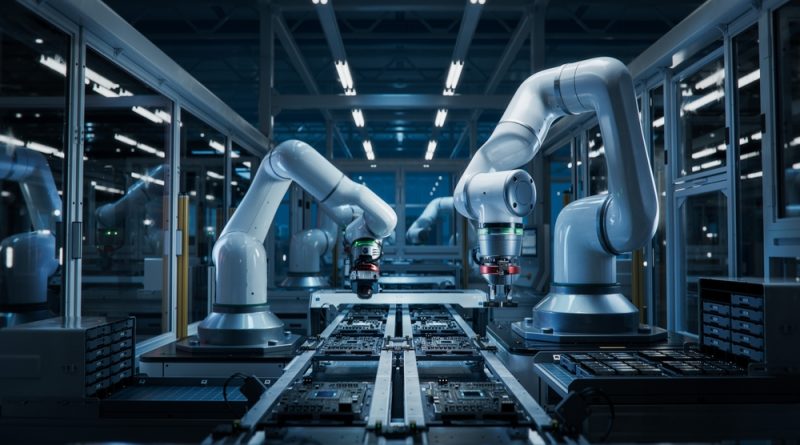More Tech Trends To Watch
Keeping an eye on emerging technologies is crucial. We already highlighted a few promising technologies to follow recently. These tech trends are shaping the future of various industries.
Understanding them can give businesses and individuals a competitive edge. As we dive deeper into the 21st century, certain technologies stand out. They promise to revolutionize our lives and how we interact with the world.
Staying informed about these trends can help you adapt and thrive in a rapidly changing world. In this article, we will explore these trends in detail.
We will look at their current state, potential impacts, and future prospects. Let’s delve into the top tech trends to watch and understand their significance.
More Tech Trends To Watch
Robotics
Robotics is transforming industries and everyday life. Robots are becoming more advanced, intelligent, and versatile.
In manufacturing, robots handle repetitive tasks with precision. This boosts productivity and reduces human error.
Collaborative robots, or cobots, work alongside humans. They enhance safety and efficiency in various settings.
Healthcare robotics is another growing field. Surgical robots assist doctors in performing delicate procedures. They offer greater precision and less invasiveness.
Rehabilitation robots help patients recover from injuries. These robots provide personalized therapy and support.
Domestic robots are also gaining popularity and they are getting closer to becoming viable for wider distribution. These robots can perform tasks like cleaning, delivery, and customer service.
In agriculture, robots are revolutionizing farming. They plant, harvest, and monitor crops with minimal human intervention. This leads to higher yields and more sustainable practices.
Autonomous vehicles, a subset of robotics, are changing transportation. Self-driving cars promise to reduce accidents and traffic congestion. These vehicles rely on advanced sensors and AI to navigate safely.
Cloud Computing
Cloud computing has become essential for modern businesses. It allows for scalable, flexible, and cost-effective data management.
Companies no longer need to invest heavily in physical servers. Instead, they can access computing resources on demand. This shift reduces costs and increases efficiency.
One major benefit of cloud computing is data accessibility. Employees can access data and applications from anywhere.
This supports remote work and global collaboration. Cloud services also offer robust data security. Providers use advanced encryption and security protocols, ensureing sensitive information remains protected.
Cloud computing enables businesses to scale quickly. They can increase or decrease resources based on demand. This flexibility is crucial for growing companies.
Additionally, cloud platforms support advanced analytics. They provide tools for big data processing and machine learning. These capabilities help businesses make informed decisions.
3D Printing
3D printing is revolutionizing manufacturing and design. It allows for the creation of complex objects with ease.
Traditional manufacturing processes often involve multiple steps and materials. 3D printing simplifies this by building objects layer by layer. This reduces waste and speeds up production.
In the medical field, 3D printing has remarkable applications. Doctors can create customized implants and prosthetics. This technology allows for precise fitting and better patient outcomes. Surgeons also use 3D-printed models for planning complex surgeries. These models provide a detailed view of a patient’s anatomy.
Aerospace and automotive industries benefit from 3D printing. It enables the production of lightweight and durable parts. This leads to improved fuel efficiency and performance.
Architects and designers use 3D printing to create intricate models. These models help visualize and refine their projects.
Brain-Computer Interfaces
Brain-computer interfaces (BCIs) are an exciting frontier in technology. BCIs enable direct communication between the brain and external devices.
This technology has vast potential in healthcare and beyond. BCIs can help individuals with disabilities regain control. They allow for communication and movement through thought alone.
Researchers are developing BCIs for various applications. In medicine, BCIs can control prosthetic limbs. They offer a new level of mobility for amputees.
BCIs also assist individuals with paralysis. They enable interaction with computers and smart home devices.
Beyond healthcare, BCIs have entertainment potential. They can enhance gaming experiences by integrating with VR systems.
BCIs could allow for control of digital environments through thought. This creates more immersive and interactive experiences.
As research advances, BCIs may become more accessible. They could transform how we interact with technology in everyday life.
These four tech trends are set to redefine their respective fields. They offer innovative solutions and new opportunities for growth.
Space Exploration
Space exploration is entering a new era of innovation. Private companies are leading the charge alongside government agencies. SpaceX, Blue Origin, and others are pushing boundaries.
They aim to make space travel more accessible and cost-effective. These companies focus on reusable rockets and advanced spacecraft. This technology reduces costs and increases the frequency of missions.
Governments also continue to invest in space exploration. NASA’s Artemis program plans to return humans to the Moon in just a few years and create the basis for yearly moon landings from 2031.
This mission will pave the way for future Mars expeditions. The European Space Agency and other international partners contribute. They collaborate on missions and share valuable data.
Space exploration extends beyond human missions. Robotic probes and rovers explore distant planets and moons. These missions gather critical information about our solar system.
Satellites play a vital role in Earth observation and communication. They monitor climate change, natural disasters, and global connectivity.
Battery Technology
Battery technology is crucial for a sustainable future. Advancements in this field impact various industries. Electric vehicles (EVs) rely heavily on efficient batteries.
Improved battery technology extends EV range and reduces charging times. This makes electric cars more practical and appealing.
Renewable energy storage benefits from better batteries. Solar and wind energy depend on efficient storage solutions.
Advanced batteries store excess energy for use during low production periods. This ensures a consistent power supply and reduces reliance on fossil fuels.
Consumer electronics also benefit from battery advancements. Longer-lasting batteries enhance the performance of smartphones, laptops, and other devices. This reduces the need for frequent recharging and extends device lifespans.
Portable and wearable technology also relies on efficient batteries. These advancements support the growing demand for mobile connectivity.
Hydrogen
Next up, Hydrogen technology is emerging as a key player in clean energy. Hydrogen fuel cells offer an alternative to traditional fossil fuels.
They produce electricity through a chemical reaction, emitting only water vapor. This makes hydrogen a sustainable and eco-friendly energy source.
Transportation is a major focus for hydrogen technology. Hydrogen-powered vehicles, including cars and buses, are becoming more common.
These vehicles offer longer ranges and faster refueling compared to EVs. They contribute to reducing greenhouse gas emissions in the transportation sector.
Industrial applications also benefit from hydrogen technology. Hydrogen can power heavy machinery and provide heat for manufacturing processes. This reduces carbon emissions and supports sustainability goals.
Additionally, hydrogen storage and distribution are advancing. These improvements make hydrogen a viable option for large-scale energy needs.
Carbon Capture
Carbon capture technology addresses air pollution by reducing emissions. This technology captures carbon dioxide (CO2) from industrial processes and power plants.
Captured CO2 is then stored underground or repurposed. This prevents it from entering the atmosphere and contributing to global warming.
There are various methods of carbon capture. Pre-combustion capture involves removing CO2 before burning fossil fuels.
Post-combustion capture binds CO2 after combustion. Both methods aim to minimize environmental impact. Carbon capture and storage (CCS) facilities are being developed worldwide.
Repurposing captured carbon is an emerging field. CO2 can be used in industrial processes, such as concrete production. This reduces the carbon footprint of construction materials.
In addition, researchers are exploring ways to convert CO2 into useful products. This includes synthetic fuels and other chemicals.
These tech trends are driving innovation and sustainability. They offer solutions to some of the world’s most pressing challenges.
By staying informed about these developments, businesses can adapt and thrive. The future of technology promises exciting advancements and new opportunities.
Final Thoughts
Keeping an eye on tech trends is crucial for staying ahead. The trends discussed—robotics, cloud computing, 3D printing, brain-computer interfaces, space exploration, battery technology, hydrogen, and carbon capture—represent significant advancements.
Each of these technologies has the potential to revolutionize industries and daily life.
Ultimately, understanding and adapting to these tech trends will be key. They offer paths to growth, sustainability, and efficiency.
By staying proactive and informed, businesses can harness the potential of these advancements.
The future holds exciting possibilities, driven by these cutting-edge technologies.
Written with Support from ChatGPT by OpenAI
Photo Credit: IM Imagery/shutterstock.com

